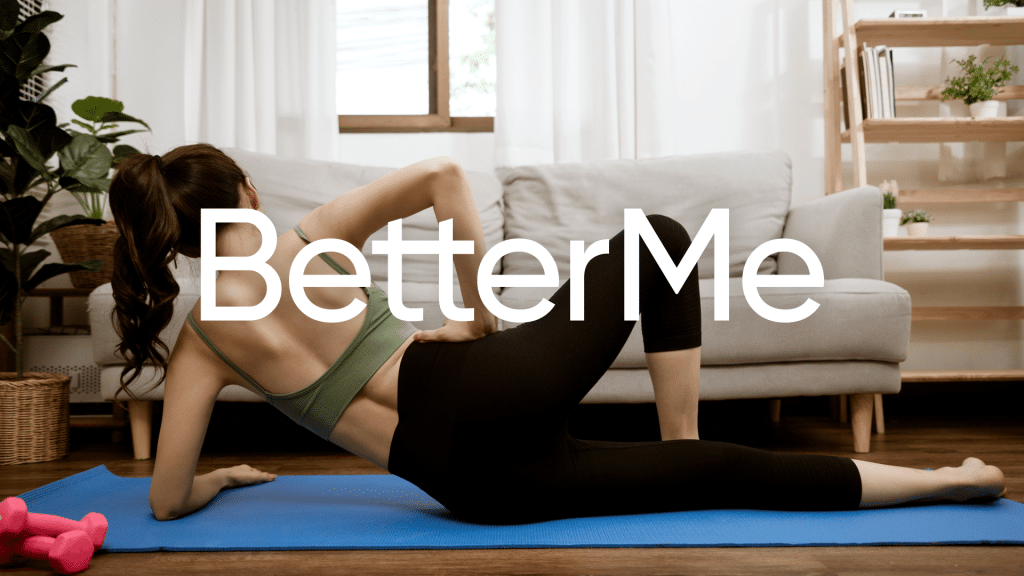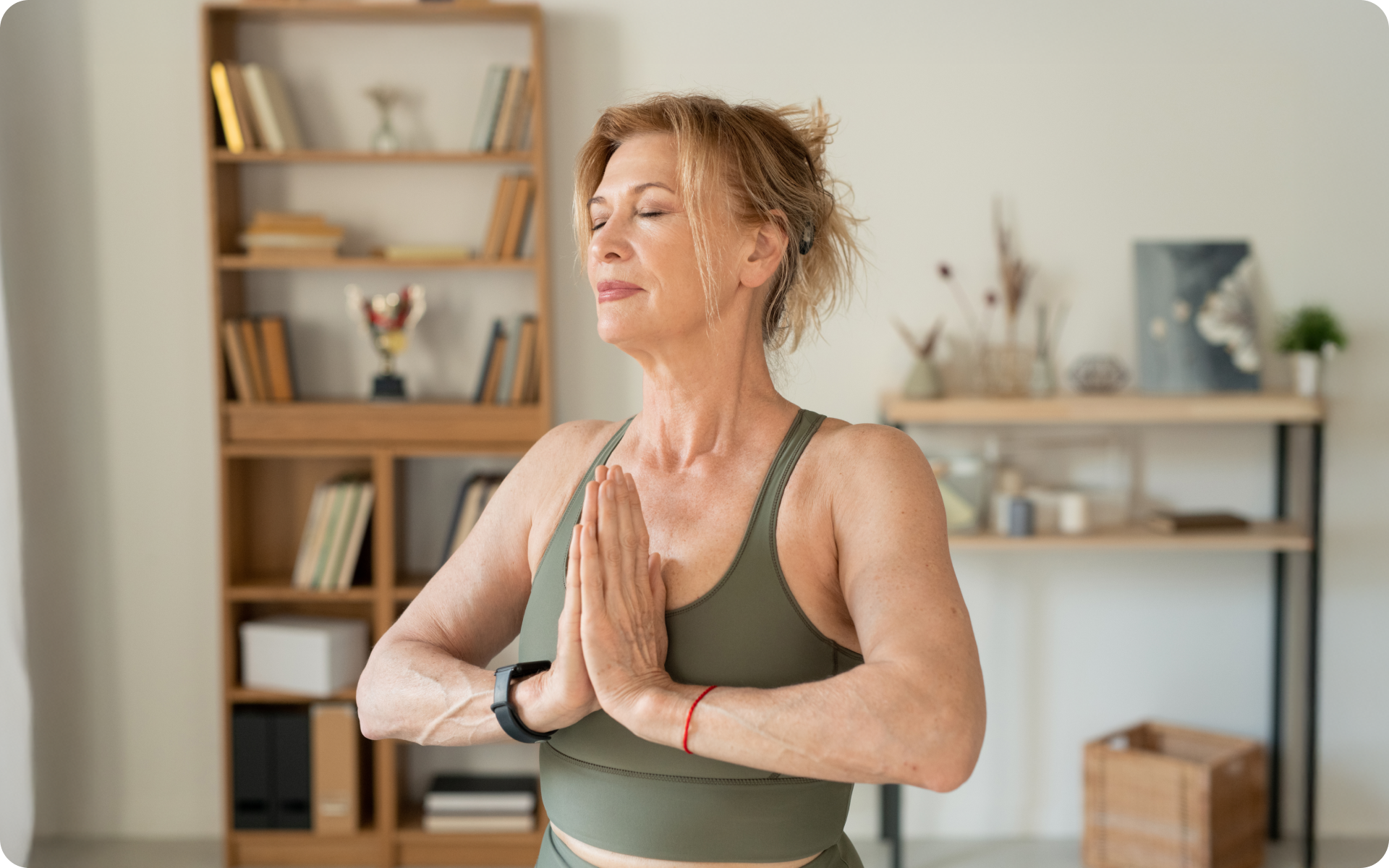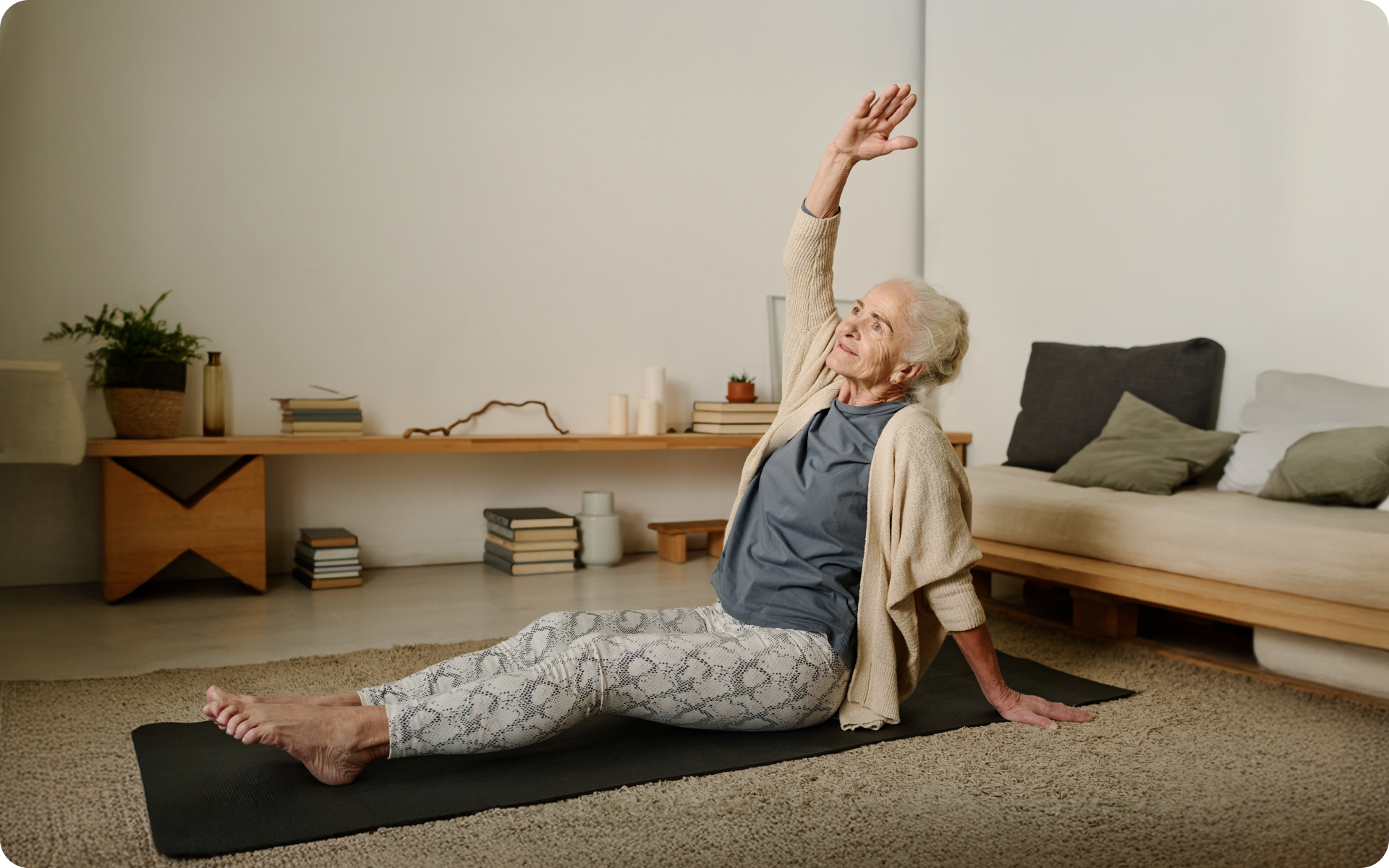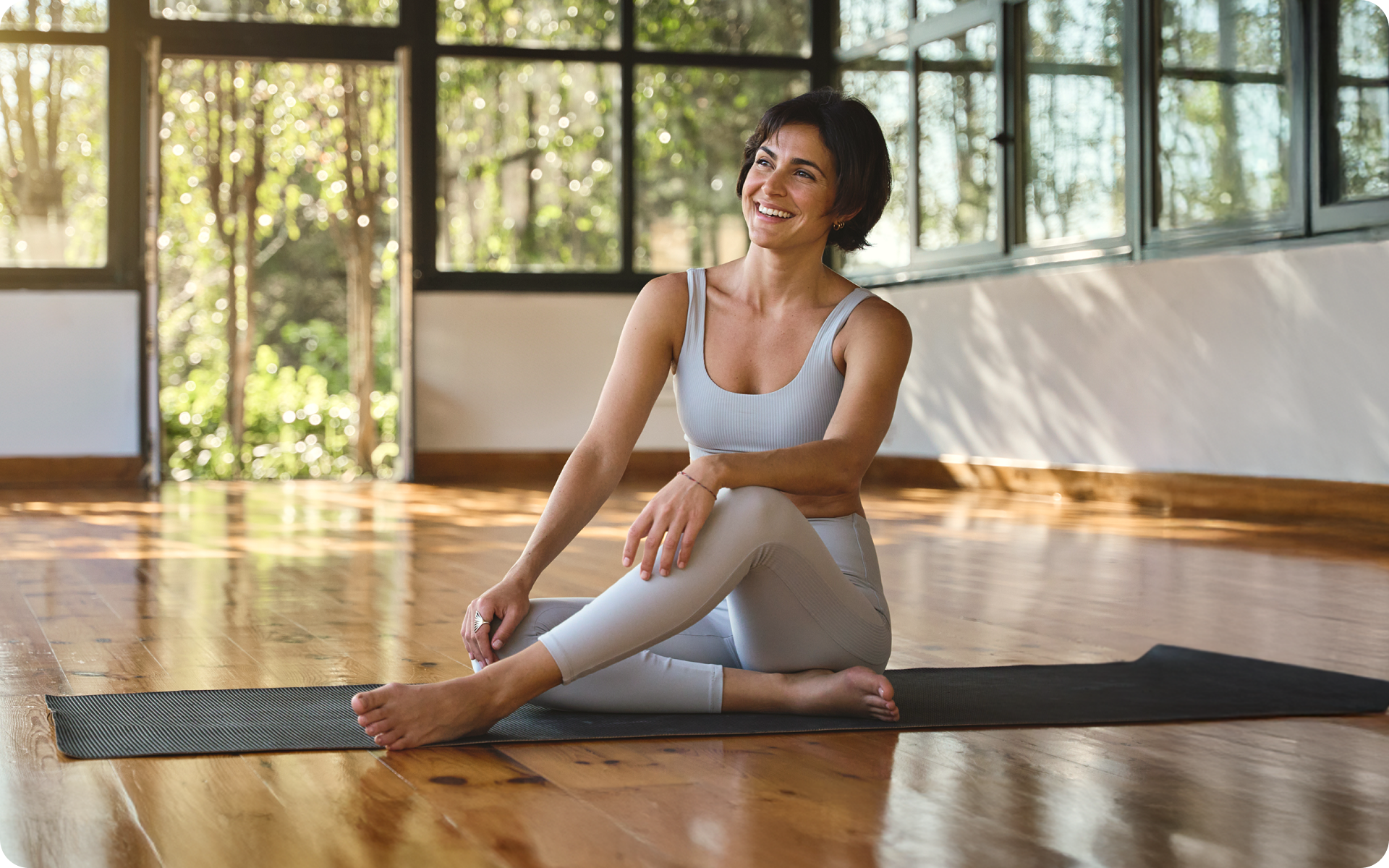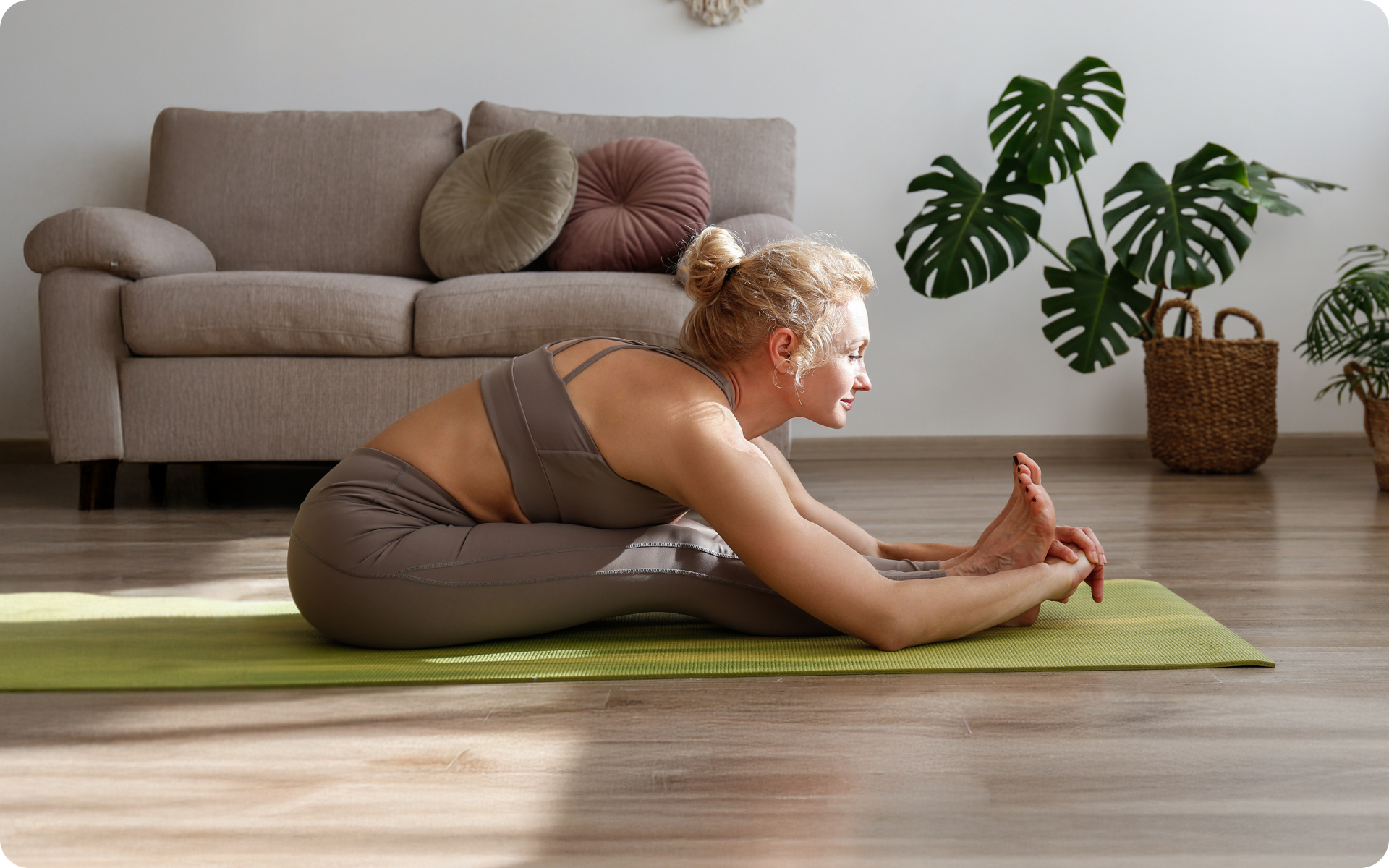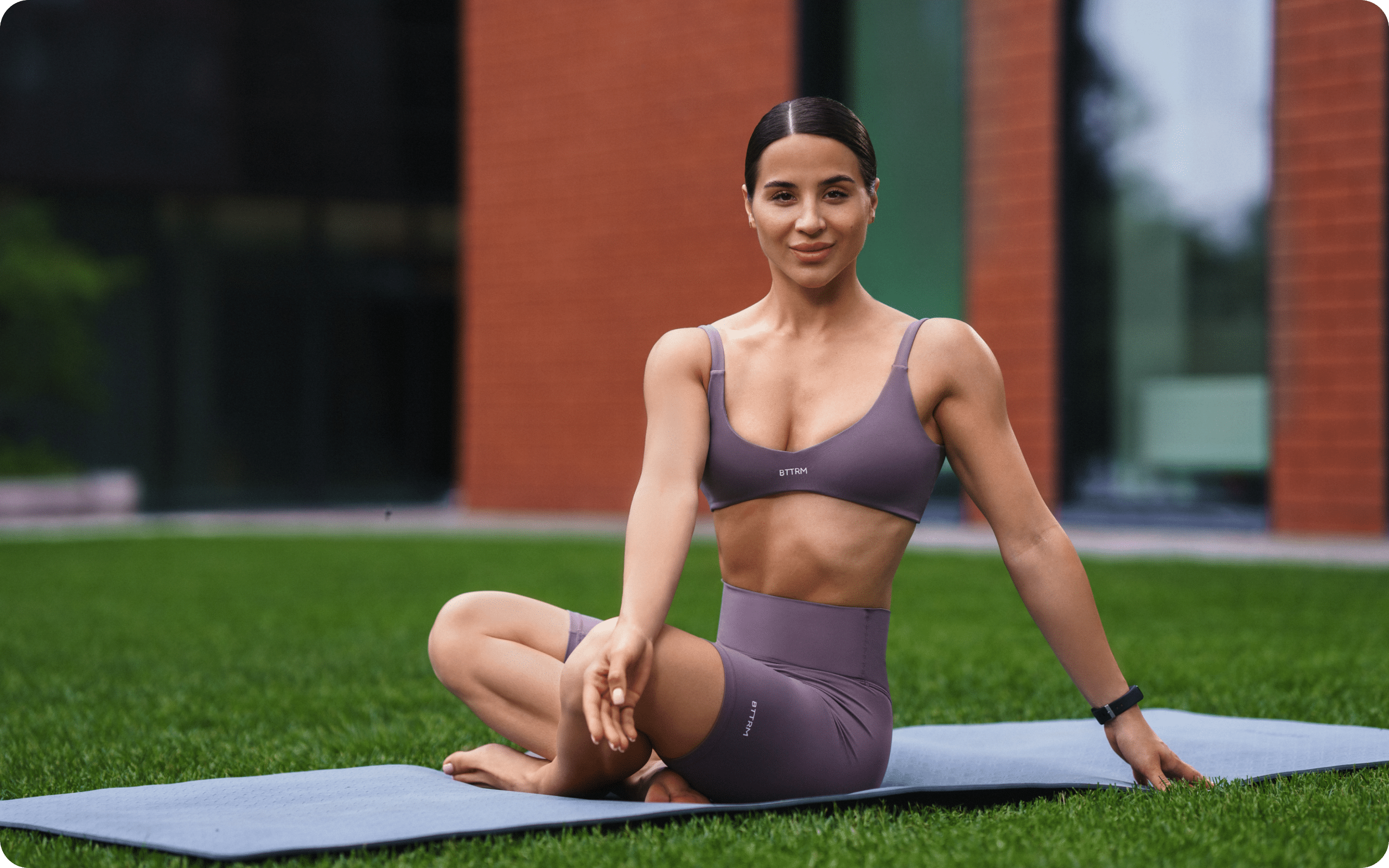“Place your body comfortably in the pose and hold it like this for 10 minutes…” – something you will often hear from your yoga instructor at your weekly class. For 10 minutes? Doesn’t that seem a little bit too long?
In fact, this is what the restorative yoga sequence entails: a tranquil practice that is all about holding relaxing poses for about 5 to 20 minutes. If you take a restorative class, don’t expect to move a great deal as this type of yoga is completely different from other styles. However, it may be just as effective as others for soothing your nervous system, enhancing your mood, or improving sleep.
It’s high time you enhanced your health using this soothing procedure. It is much more beneficial to start your journey with a professional instructor in face-to-face classes or find someone reliable over the Internet so you can enjoy classes from home.
Welcome to the world of restorative yoga poses – a restful practice for better health.
What is restorative yoga?
If you’ve heard about restorative chair yoga, then the general notion of restorative yoga won’t be new to you.
But there’s nothing wrong with a bit of revision, right?
Firstly, it’s important to highlight that restorative yoga is a restful practice that involves holding poses (asanas) for a longer period of time with the help of additional props, such as blankets, bolsters, or yoga blocks (1).
You can start your restorative yoga without props, but it may be difficult to hold some poses without them, particularly in the beginning. By using props for support, you put almost no effort into holding the pose.
This practice of deep relaxation emphasizes the meditative aspect of yoga—the union of body and mind.
Just picture this: You enter a state of relaxation and release the tension from your body and mind. Thoughts rush into your head, and your job is to let them do so rather than avoiding them.
It’s important to pay attention to your breath and become aware of your sensations and thoughts. During a one-hour restorative yoga class, your yoga instructor may guide you through only five or six supported poses. The soothing music in the background and dim light will set the mood for the serene procedure.
In a typical vinyasa class, you quickly move from one pose to another and as a result, you increase your flexibility and strength over time. This energetic style of yoga focuses on muscular engagement, whereas restorative yoga relaxes the muscles by using props to support the body.
Therefore, restorative yoga poses for seniors are quite common as they don’t require deep stretching or tense movements.
However, despite the unharmful nature of restorative yoga, it’s still recommended that you consult a physician before you commit to this type of class, particularly if you’re healing from past physical traumas.
BetterMe app will kick you out of the mental funk, shake off your extra weight, rid you off your energy-zapping habits, and help you sculpt the body of your dreams. Intrigued? Hurry up and change your life for the better!
What are the best restorative yoga poses?
I hope you now have a clear idea of what restorative really is. Let’s look at the key 5 unique restorative yoga poses. You should expect to hold each pose for at least 5 minutes, with or without props – it’s completely up to you as long as you feel comfortable and relaxed.
The five most common restorative yoga poses with names are:
- Child’s Pose
- Fish Pose
- Corpse Pose
- Leg-up-the-Wall Pose
- Supported Bridge Pose
Child’s Pose
An effective pose that helps with stress and fatigue, gently stretching the hips, spine, glutes, hamstrings, and shoulder muscles. Among the most popular yoga poses for hips, Child’s Pose is a relatively simple and gentle practice.
To do this pose:
- Kneel on the floor with your knees hip-width apart and buttocks on your heels.
- Place a cushion or folded blanket between your thighs and calves for support.
- Exhale and lean forward with your torso between your thighs, bringing your head down toward the floor.
- Extend your arms out above your head with your palms on the floor. If you find this too difficult, allow your arms to rest alongside your body with your palms facing up.
- Add a cushion or folded blankets beneath your head and arms for extra support.
- Remain in this pose for up to 5 minutes, inhaling and exhaling deeply the entire time.
- Release by lifting your torso up into a seated position.
Fish Pose
Among the restorative yoga poses for beginners, the Fish Pose is particularly useful for those who spend a lot of time sitting during the day. You can make this pose more comfortable by using folded towels or blankets beneath your head and shoulders.
To do this pose:
- Place two folded blankets on the center of your mat, parallel to each other with a small gap between them.
- Lie on your back and rest your shoulder blades on the blanket closest to you.
- Rest your head on the second blanket. Keep your legs folded or extend them in front of you.
- Rest your arms at your sides or extend them above your head with your palms facing upward.
- Close your eyes and breathe deeply while releasing the tension from your body.
- Remain in this pose for 10 minutes or more. Focus on deep breathing and releasing the tension in your muscles.
Corpse Pose
There are many restorative yoga poses with a bolster and this one can effectively play the role of a stress reliever.
To do this pose:
- Place a folded blanket at the top of your mat and a bolster or two folded blankets towards the end of your mat.
- Sit between the folded blankets with your knees bent and back straight.
- Extend your legs, resting them on the bolster or folded blanket.
- Gently lie on your back until the back of your head rests on the blanket.
- Place your arms in a natural position at your sides with your palms facing upward. You will create a gap between your arms and body.
- Remain in this pose for 10 minutes or more. Focus on your breathing and how tension is released from your muscles.
Leg-up-the-Wall Pose
This pose is ideal for runners and people with more sedentary lifestyles. The restorative posture can promote relaxation and reduce swelling or discomfort in the legs, while also helping with blood circulation.
To do this pose:
- Place your yoga mat or blanket on the floor next to the wall. You can also use a thin pillow for resting your head.
- Lie down and scoot your buttocks close to the wall. Ensure your tailbone is on the floor, a few inches from the wall, and your upper body is perpendicular to the wall.
- Rest the backs of your legs against the wall with your knees relaxed. You should feel a gentle stretch but no intense sensation.
- Relax and breathe in and out deeply while you hold the pose. Start with two to three minutes, but you can hold it for longer if you want.
- When you’re ready to come out of the pose, move slowly into a seated position for at least 30 seconds (4).
Read more: Hot Yoga: Calories Burned, Pros, Cons and Frequently Asked Questions.
Supported Bridge Pose
This is one of the most effective heart-opening yoga poses that reenergizes and lifts up your mood. It may also help relieve tension and fatigue in your back.
To do the pose:
- Lie on your back with your knees bent. Raise your hips from the floor and place a block or a bolster beneath your lower back.
- Ensure you set it at the base of the spine, rather than under the flesh of the buttocks.
- Adjust your prop so that you feel completely stable and can fully release your body.
- Relax your arms next to your body and close your eyes. Remain in this position for 4 to 5 minutes.
- When finished, lift your hips to slide the prop out, then gently roll your spine onto the ground. Hug your knees to your chest and take a few breaths as a counterpose.
How many poses are there in restorative yoga?
It’s no secret that restorative yoga poses are just typical yoga poses that have been modified with additional support. In total, there are many common yoga poses, but not all of them can be adjusted to the restorative yoga poses.
Therefore, we can highlight up to 10 of the most common restorative yoga poses with blocks, blankets, or bolsters. In addition, for each practice, you will need no more than five or six poses, as you will hold each one for much longer than in a standard yoga sequence.
How long should you hold each pose in restorative yoga?
Restorative yoga requires comfort, relaxation, and a longer hold of each pose. On average, you should hold each restorative yoga pose for a minimum of 5 minutes. The maximum hold length is 20 minutes.
The longer you hold a pose, the more benefits you will receive. Beginners who start restorative yoga may find it boring rather than difficult in the beginning. If you haven’t done this type of yoga class before, you can expect to feel the same.
However, once you engage in the process, you’ll understand that there is something soothing about holding each pose for 5 minutes or more and gradually start to enjoy the feeling of tension leaving your muscles.
If you experience any nagging pain, you should stop the restorative practice immediately and contact a professional doctor for assistance.
What are the three pillars of restorative yoga?
There is a difference between doing something and doing something correctly. This also applies to restorative yoga as you won’t get the benefits without a complete understanding of the proper technique. There is no doubt that restorative yoga is particularly helpful when it comes to stress relief.
A study has shown that restorative yoga offers hopeful outcomes for the effective reduction of stress (3).
Let’s immerse ourselves into the three main restorative yoga pillars to receive advantages from this procedure:
- Create a comfortable environment using props. It may be difficult to find a tranquil space for yourself, particularly if you live with friends or relatives, but that’s why signing up for a real-life class may be a good idea to start your restorative journey. Props are essential in this type of yoga as they help your muscles relax and allow you to experience a sense of deep rest.
- Focus on slow-paced movements combined with deep-breathing techniques. Try to hold the poses for as long as you can while also observing your breathing. Take slow intentional inhalations and exhalations through your nose to regulate your heart rate and relax the muscles. You shouldn’t rush from one pose to another because you’re bored and should approach each pose with care, as if you’re doing it for the last time. Your body will thank you for this.
- Maintain mindfulness by focusing on sensations in your body. Notice when your mind spaces out during a restorative pose and try to bring your focus back to your breath. Rather than judging yourself for anxious thoughts or a busy, distracted mind, simply acknowledge your thoughts and allow them to pass by.
Whether you’re looking to simply pep up your fitness routine, jazz up your diet with mouth-watering low-calorie recipes or want to get your act together and significantly drop that number on your scale – BetterMe app has got you covered! Improve your body and revamp your life with us!
What are the disadvantages of restorative yoga?
Even though restorative yoga is a passive resting practice, some people may find it challenging. You might think it’s easy to lie around and relax, but the practice of being still and restful may provoke anxiety in some people. If we feel stressed out of grief, or feel ill, releasing control of the body can be overwhelming for the nervous system.
Passive postures can evoke feelings of discomfort.
If you look at it from the physical level, your body is in a vulnerable state: You are releasing control of all your muscles and lying with your eyes closed and your chest and abdomen exposed. In many restorative poses, your body may be also splayed out, which could leave you feeling physically insecure or unstable.
Restorative poses can also be challenging on an emotional level. When you’re in a passive posture, the mind is focused on fewer physical tasks and sensations, which makes it more likely that your attention will turn inward. Therefore, a lot of suppressing emotions, such as fear, anxiety, or sadness may come to the forefront of your mind once your body starts to relax.
It’s important to remember that if you have a previous or pre-existing health condition, you should consult your physician before you practice restorative yoga.
Is restorative yoga good for weight loss?
Implementing restorative yoga practice can positively affect your overall well-being, including weight loss. Let’s face it, not everyone who wants to trim their body fat can run or commit to intense workouts.
This is why restorative yoga is a perfect way to burn calories as it doesn’t require intensive movements, running, or other invigorating activities.
A study of 50 obese or overweight adults saw participants assigned to either restorative hatha yoga or more vigorous vinyasa yoga for 6 months during a behavioral weight-loss program (2).
While restorative hatha yoga is mostly focused on poses for relaxation and the holding of postures, vinyasa yoga is a more rigorous style of yoga where you quickly change poses.
Participants practiced yoga 5 days a week, starting with 20 minutes per day for the first 8 weeks and then progressing to 40 and ultimately 60 minutes per day.
Results showed that participants in both groups lost significant amounts of weight and improved their cardiorespiratory fitness, regardless of the yoga style they practiced. Therefore, restorative yoga may be an effective weight loss method for those who are obese or overweight. However, more research comparing yoga with other forms of physical activity is required to understand its long-term effects on weight loss (2).
Read more: Chair Yoga Hip Openers: Simple Stretches For Reduced Pain & Increased Flexibility.
FAQs
How many times a week should you do restorative yoga?
If you’re new to restorative yoga, you can start with once or twice a week for 5 minutes. You can gradually increase this to 5 times a week and 20 minutes per pose. It’s all individual and is entirely dependent on your health condition. Most importantly, you should ensure you use essential props to make your experience more relaxing and enjoyable.
Can beginners do restorative yoga?
Yes, beginners can do restorative yoga. Starting with twice a week for 5 minutes or less of each pose is sufficient for a newcomer. Don’t push yourself for longer poses at first. This will come naturally through enough practice. If you experience any pain or irritating sensation during movements, you should immediately stop the class and contact your healthcare provider.
What time of day should I do restorative yoga?
This doesn’t matter. Do it whenever is most suitable for you. What you need is personal space, additional props, and at least 20 minutes of free time to practice a few poses. Whether this is in the morning or evening, it will be effective as long as you commit to it.
Does restorative yoga count as exercise?
Restorative yoga is a form of exercise that falls under the category of low-intensity exercise as it is a restful practice that is mostly focused on your body sensations and relaxation. However, If you want to lose a significant amount of body fat, you may need to also include high-intensity training, such as body weight workouts or running in your routine.
Can you do restorative yoga without props?
Yes, you can do restorative yoga poses without props, but it may become more challenging to hold longer poses without them. If you want to enjoy full relaxation and release tension from your muscles, try using props during restorative yoga sessions.
What are 5 benefits of restorative yoga?
Restorative yoga poses and benefits will be noticeable from the first week of your sessions. Benefits include increased relaxation, better sleep, improved well-being, reduced pain, and enhanced mood. You can see that it will positively impact both your physical and psychological state.
What does restorative yoga do for the body?
This type of yoga restores the body to its parasympathetic nervous system function, which helps the body relax, helping with healing, and restoring balance. In addition, this practice is gentle on your joints and making it part of your routine can strengthen the connective tissues that surround your bones and joints.
The Bottom Line
You’re now ready to immerse yourself into restorative yoga poses, a restful practice that is known for its calming effects and contributions to well-being. Restorative yoga can be a perfect way to relieve stress and enjoy long, soothing stretches.
The most common poses with this type of yoga are the Child’s Pose, Fish Pose, Corpse Pose, Leg-up-the-Wall Pose, and Supported Bridge Pose.
The three essential restorative yoga pillars are a comfortable environment, slow-paced movements, and mindfulness. It is recommended to hold each pose for at least 5 minutes on average.
Restorative yoga is good for beginners of any age or sex. However, if you’re suffering from a medical condition, including past traumas, you should discuss it with your doctor before engaging in restorative yoga.
DISCLAIMER:
This article is intended for general informational purposes only and does not serve to address individual circumstances. It is not a substitute for professional advice or help and should not be relied on for making any kind of decision-making. Any action taken as a direct or indirect result of the information in this article is entirely at your own risk and is your sole responsibility.
BetterMe, its content staff, and its medical advisors accept no responsibility for inaccuracies, errors, misstatements, inconsistencies, or omissions and specifically disclaim any liability, loss or risk, personal, professional or otherwise, which may be incurred as a consequence, directly or indirectly, of the use and/or application of any content.
You should always seek the advice of your physician or other qualified health provider with any questions you may have regarding a medical condition or your specific situation. Never disregard professional medical advice or delay seeking it because of BetterMe content. If you suspect or think you may have a medical emergency, call your doctor.
SOURCES:
- How does yoga work? (2023, medicalnewstoday.com)
- How to Do Restorative Yoga (2022, webmd.com)
- Restorative yoga therapy for third-year medical students in pediatrics rotation: Working to improve medical student well-being (2023, ncbi.nlm.nih.gov)
- Study Sees Beneficial Role of Yoga in Weight-Loss Program for Adults With Obesity or Overweight (2021, nccih.nih.gov).



